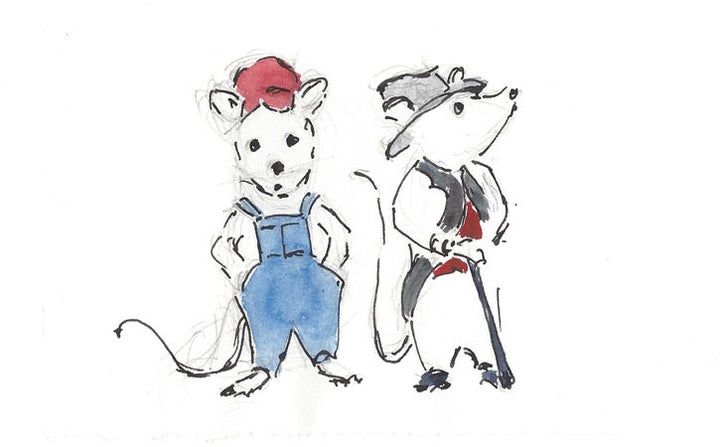
It’s a story as ancient as Aesop’s Fables, a story we tell over and over again. The sophisticated urbanite comes to visit a country relation and makes fun of the simple home, simple meal, and simple morality of rural life. But when the poor country cousin visits the urban cousin, we see city life full of excess and danger. The moral is clear: Unadorned country living is good and the corruption and vice of the urban metropolis is bad. Twenty-first century Americans still hold this belief, but today even the country mouse is tainted with city life.
Every era updated this story. The satiric London painter William Hogarth applied this urban-rural moralism in his Harlot’s Progress paintings. American revolutionaries in the 1770s saw themselves as the country cousins upholding the purity of the British Constitution, which had been corrupted by the excesses of an urbanized King and Parliament. The populism of the late 1820s brought Andrew Jackson into the presidency—the rough-and-ready westerner sweeping away the corruption of elite eastern urbanites. William Henry Harrison capitalized on populism by painting himself as the rural common man in his 1840 “hard cider and log cabin” campaign. Twenty years later, “Honest Abe” Lincoln the Rail Splitter did the same. The silver-spoon New Yorker, Teddy Roosevelt, parlayed his western rancher and Rough Rider image to become a populist figure. Rural values are celebrated in the classic paintings of Norman Rockwell. Beginning in the 1950s, rock-and-roll was labeled an urban scourge foisted on the countryside. We see the conflict of urban/rural values in Richard Nixon’s notion of the “silent majority” and in Ronald Reagan’s emphasis on “family values.” And our twenty-first century has a new era of American populism.
But things have changed since my grandfather listened to humorist Will Rogers on the radio declare, “What the country needs is dirtier fingernails and cleaner minds.” America has witnessed a seismic shift.
In 1900, only 45% of Americans lived in urban areas. Farmers were nearly 40% of the labor force. By the end of the century, more than 75% of Americans were city folk, and today, fewer than 3% work on farms. Like it or not, America—all of America—has been citified. At the start of the twentieth century most Americans lived close to their work—they had to. For most, a ten-mile trip to town was a weekly or monthly event. Today, Americans drive an average of 30 miles per day. In 1900, the Western Union telegraph or U.S. Postal Service was the most efficient means of long-distance communication. Today, digital voice, email, and text communications reach every segment of American society. With these innovations comes a flood of urbanized information, content, ideas, and values. No matter where you live and what you believe, urban values are integral to your lifestyle. Americans are no longer country and city cousins—we’re just one big urban family.
We may not like this very much, but the truth is hard to escape. Americans can no longer avoid each other. The citified cannot retreat to the cosmopolitan “Metropolis” and avoid the provincial. Traditionalists can no longer wrap themselves in the isolation of the countryside. Only a nanosecond separates us.
It is time for us to put Aesop’s story on the shelf. It no longer describes our world. America is no longer a series of small independent communities isolated from each other. We are a cosmopolitan nation. What happens in Nebraska is important to me on the Eastern Seaboard. Southern values are northern values; Western values are eastern values—and vice versa. We must care for all our diversity—racial, ethnic, economic, social, religious, and those disadvantaged by health. The struggle of minorities cannot be isolated. Urban financial centers and corporations must embrace their impact on small-town “Main Street.” And rural America must look past traditional community rhythms and patterns. Change is coming. In many ways it is already here. We must understand that together we are creating a new America. No one can hold back the flood of technological innovation. It touches each and every American. We need to embrace it—embrace each other—and innovate to create an America for the twenty-first century. This is not a contest of ideologies. We are all Americans in a quest for individual freedom and equality. What we have in common is far stronger than any of our divisions. Working together is the only way to insure this nation will continue to be a beacon of liberty.
